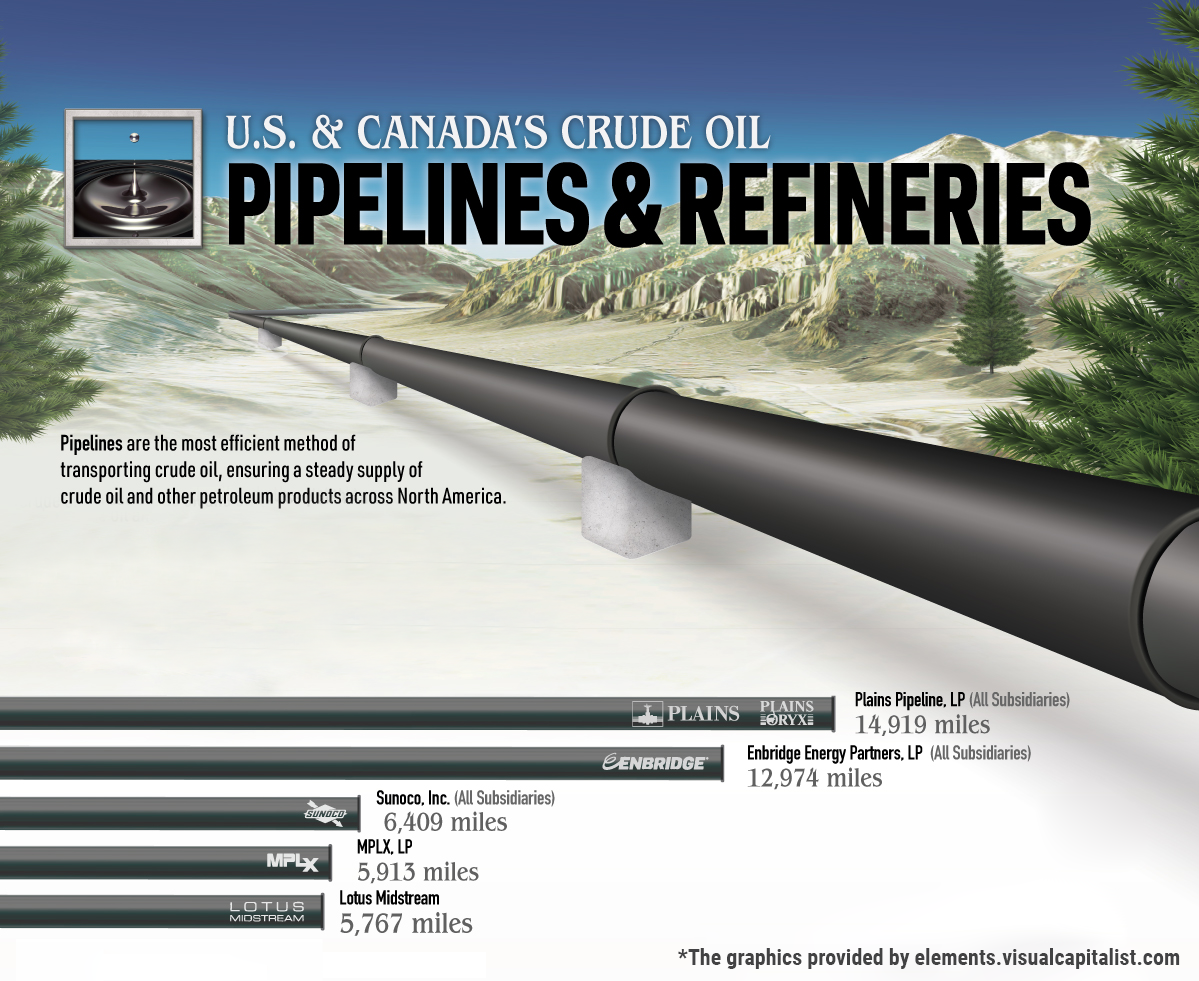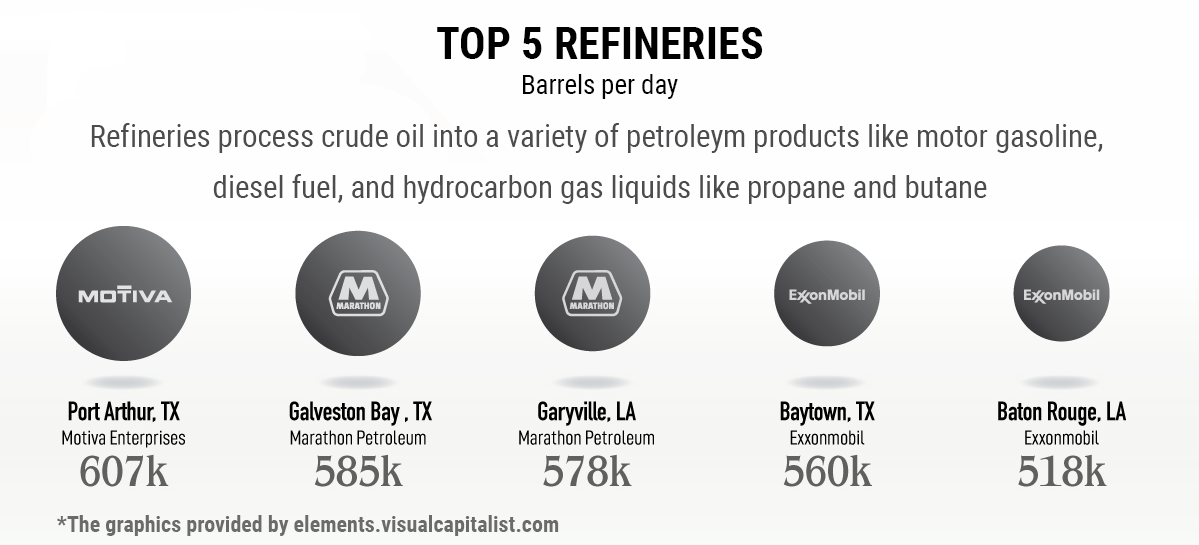Being the main means of transferring crude oil around the world, pipelines rapidly convey oil and its derivative products (gasoline, jet fuel, diesel fuel, heating oil, and heavier fuel oils) to refineries and empower other businesses.
The U.S. and Canada solely make North America a major oil hub for more than 90,000 miles of crude oil and petroleum product pipelines, which are connected to more than 140 refineries daily processing about 20 million barrels of oil.
All data provided in this article are based on Rextag's application to demonstrate crude oil pipelines and refineries across the U.S. and Canada.
Compared to 2010, U.S. crude oil production has increased more than twice: from 5.4 to 11.5 million barrels a day. Therefore, newly produced oil obliged energy companies to expand their pipeline networks, but it has only increased by 56%. According to the latest data, Plains manages the largest pipeline network across the U.S. and Canada (its diameter is at least 10 inches) which is the 14,919-mile network that spans from the northwestern tip of Alberta down to the southern coasts of Texas and Louisiana.

Other companies with the largest length of pipeline networks are Enbridge Energy Partners LP (12,974 miles), which transports about 30% of the crude oil produced in North America., then Sunoco Inc. (6,409 miles), MPLX LP (5,913 miles), and Lotus Midstream (5,767 miles).
The place where all these various spreading pipeline networks carry crude oil is refineries, where it is transformed into different petroleum products. Gulf Coast (PADD 3) possesses several refineries with the largest throughput in North America that process more than 500,000 barrels per day. They are located in the states of Louisiana and Texas: Motiva Enterprises (607,000 bpd), Marathon Petroleum in Galveston Bay (585,000 bpd), Marathon Petroleum in Garyville (578,00 bpd), ExxonMobil in Baytown and Baton Rouge (560,000 and 518,000 respectively).

It is important to admit that Texas and Louisiana have six refineries that process more than 400,000 barrels per day, nevertheless, there are only two facilities outside of these states with the same throughput: Whiting, Indiana (435,000 bpd) and Fort McMurray, Alberta (465,000 bpd).
However, Fort McMurray's facility is an upgrader, which upgrades heavy oils like bitumen into lighter synthetic crude oil which flows through pipelines more easily, that is why it differs, as lots of oil refineries are not able to directly convert bitumen, consequently it makes upgraders an obligatory part in the production and processing of crude oil from oil sands.
Not only does the development of new pipelines give a plethora of opportunities for economic growth but also it remains a contentious issue in Canada and the U.S., with the cancellation of the Keystone XL pipeline emblematic of growing anti-pipeline sentiment. In 2021, only 14 petroleum liquids pipeline construction plans were completed in the U.S., which is considered the lowest amount of new pipelines and expansions ever since 2013.
Since the U.S. has banned Russian oil imports and Russia's impending export of raw materials, domestic energy production is needed as never. It turned out that North American consumers are now facing surging gasoline and energy prices as foreign oil is proving to be far less reliable in times of geopolitical mess.
Anti-pipeline sentiment did not come out unexpectedly as leaks and spills in just the last decade have resulted in billions of dollars of damages. From 2010 to 2020, the Pipeline and Hazardous Materials Safety Administration reported 983 incidents that resulted in 149,000 spilled and unrecovered barrels of oil, even five fatalities, 27 injuries, and more than $2.5B in damages.
Fortunately, over the last five years, liquid pipeline incidents have decreased by 21% while pipeline mileage and barrels delivered have grown by more than 27%. In addition to these infrastructure improvements, pipeline developers and operators stress the lack of better alternatives, as freight and seaborne transportation are both far less efficient and result in more carbon emissions.
Meanwhile, pipelines stay vital components of energy consumption all over the U.S. and Canada, and as global energy markets meet supply squeezes, sanctions, and geopolitical turmoil, the focus on them has increased.





